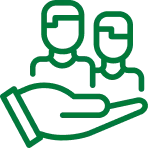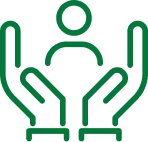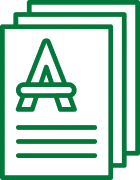At present, the Kindergarten Program for Ontario is organized into four strands.
A student with Down syndrome will have an easier transition if their parents and the teaching team are aware of the ways in which these strands interact with the student’s strengths and what the research says about supporting the learning of students with Down syndrome.

Many students with Down syndrome, because of their developmental levels, will tend to play and work in individual or parallel configurations. They will benefit from support to join and contribute to small groups.
AT HOME: Encourage children to collaborate with you by guiding them to participate in well-defined, do-able tasks. (i.e., “Let’s put these cans on the shelf. You hand that one to me and I’ll put it away. Ooooh – heavy, isn’t it?”)
AT SCHOOL: The suggestion to work with one other student (i.e., “Can you two fill this bin with blocks?”) may be at an appropriately demanding level for the student with Down syndrome.

Research has established that young students with Down syndrome have significant difficulties with self-regulation. They can also be overwhelmed by the flurry of language that is addressed at them when they experience difficulties, (i.e., when a child doesn’t want to return to class after outdoor play: “Let’s go, Rene. Play time is over. Time to go back in. We’re going to do some exciting stuff. See? Abby is going in. See? Emily is going in. Don’t you want to sit beside Ji-Hoon? Come on – let’s go. I’ll ask Ji-Hoon if you can sit beside him. Come on – make a good choice.”)
AT HOME: Encourage children to collaborate with you by guiding them to participate in well-defined, do-able tasks. (i.e., “Let’s put these cans on the shelf. You hand that one to me and I’ll put it away. Ooooh – heavy, isn’t it?”)
AT SCHOOL: When the child has trouble with self-regulation, restate the expectation in simple language and then expect cooperation. Offer an effusive positive reaction when they gather themselves and comply.

Students with Down syndrome tend to over-achieve in Literacy and under-achieve in Mathematics. They benefit from multiple opportunities to be exposed to Literacy and Numeracy in everyday life and instructional situations.
AT HOME (Literacy): Multiple, relaxed opportunities for reading and discussing familiar texts will provide important foundational Literacy experiences.
AT HOME (Numeracy): Natural Mathematics learning opportunities are often lost in everyday life, when they would teach valuable concepts. As an example, unloading the dishwasher is an opportunity to sort, classify and count cutlery. This is valuable Math learning.
AT SCHOOL (Literacy): Young students with Down syndrome may have difficulty attending to, seeing, or hearing stories in group situations. Literacy lessons in small groups or one-on-one situations will have a greater impact.
AT SCHOOL (Numeracy): Foundational concepts such as size (“Which one is bigger? Which one is longer?”), measurement (“How many cars can we line up in this box?”) and location (“Put this behind the easel.This one goes in front of the easel.”) are often ignored in the rush to teach number facts.

Children with Down syndrome have been known to surprise their parents and teachers with their capacity to think “outside the box”. Nevertheless, the research does point to their passive persistence in exploring alternatives, and their low motivation to start and accomplish tasks.
AT HOME: Celebrate and reward repeated efforts. (Parent: “High five because you tried three times to get your boot on!”)
AT SCHOOL: Reward students for starting tasks that they dread. (EA: “Just do the first two and we’ll sing for one minute!”)
Young students with Down syndrome have distinctive learning styles and communication challenges. The transition to Kindergarten can be smoother if parents and school personnel understand how their unique learning profile interacts with the curriculum.